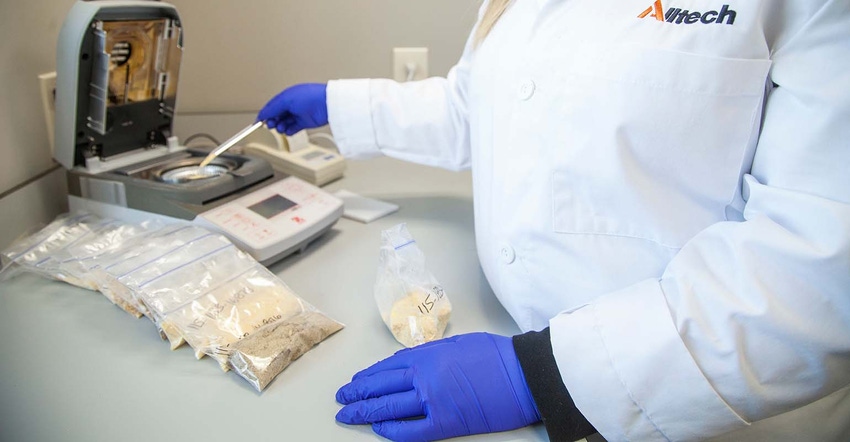November 22, 2017

Corn silage samples from across the entirety of the U.S. in 2017 have shown extremely high levels of mycotoxins, particularly deoxynivalenol (DON), type A trichothecenes (T-2), fusaric acid and fumonisin.
Mycotoxins are a regular concern for producers, as they influence feed quality and animal safety. They are produced by certain species of molds and can have toxic properties that impact animal health and performance.
“Understanding the risk of mycotoxins and combinations of mycotoxins, even at lower levels, allows livestock owners and managers to institute a management program for more optimum performance and health,” said Dr. Max Hawkins, nutritionist with the Alltech Mycotoxin Management team. “Testing feedstuffs and finished feeds is paramount to putting this management program in action.”
Mycotoxins are seldom found in isolation, and when multiple mycotoxins are consumed, they may have additive, or even synergistic, interactions that increase the overall risk to performance and health. As a result, an animal may have a stronger response than what would be expected if it was only experiencing a single mycotoxin challenge.
It is important to conduct a mycotoxin analysis on feedstuffs harvested in 2017. The analysis should identify the storage mycotoxins, including Penicillium and Aspergillus mycotoxin groups, as there is potential for additional mycotoxins to develop during storage. Proper mycotoxin management techniques can reduce the risk of mycotoxins coming from feed materials as well as help to prevent the negative effects mycotoxins can on have animal health and performance.
It is important to note that once there are mycotoxins in the crop, they will not go away. There will be higher levels of mycotoxins on farms practicing monocropping of corn, as opposed to those farms that are rotating crops or using deeper tillage methods.
Source: Alltech
You May Also Like




